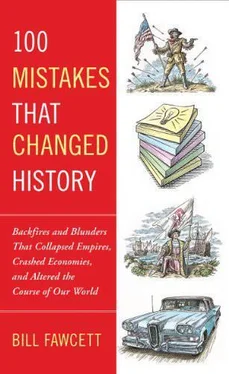Nonetheless, considerable amounts of Iraq’s arsenal were eradicated by precision strikes during Operation Desert Storm in 1991. The United States and its allies forced conditions upon Iraq in the aftermath of the war. The United Nations Special Commission on Weapons (UNSCOM) was established to carry out weapons inspections in Iraq; the International Atomic Energy Agency (IAEA) was tasked with examining the possibility of Iraq developing nuclear weapons.
UNSCOM regularly inspected Iraqi facilities from 1991 to 1998. During that time, evidence of past attempts at creating chemical and biological WMDs in Iraq was revealed. Confessions by “Dr. Germ” (Iraqi biologist Rihab Rashid Taha) indicated that she had overseen numerous experiments with the intent of weaponizing pathogens. Iraq remained tight-lipped about its previous endeavors. UNSCOM discovered evidence of continuing research at Al Hakam, a facility Taha described as a chicken feed plant. The plant was destroyed in 1996; Charles Duelfer, UNSCOM’s deputy executive chairman, retorted to Taha’s claims by quipping that, “There were a few things that were peculiar about this animal-feed production plant, beginning with the extensive air defenses surrounding it.”
Iraq became increasingly uncooperative, and in December 1998, the United States and the United Kingdom initiated Operation Desert Fox, a four-day bombing campaign of various suspected weapons sites. UNSCOM officials left shortly before the campaign and later reported they were 90 to 95 percent convinced that Iraq’s weapon capabilities had been eradicated; shockingly, Hussein did not embrace the inspectors back with open arms. For the next four years, Iraq was no longer subject to regular inspections. This understandably created anxiety among Western analysts, who estimated that Hussein could swiftly restart any weapons program in the interim. Hussein publicly stated that Iraq was not pursuing weapons of mass destruction, though this did little to allay fears when he sandwiched such rhetoric with claims of the justifiability of Iraq pursuing any weapons necessary to defend itself against its enemies.
In the months leading up to the 2003 invasion into Iraq, President Bush spearheaded efforts to force Iraqi compliance with its disarmament obligations; this manifested in the passage of Resolution 1441 by the UN Security Council, which demanded just that. Hussein accepted the resolution on November 13, 2002. Inspections by the IAEA and the UN Monitoring, Verification and Inspection Commission (UNMOVIC) yielded no evidence that Iraq had resuscitated any of its old weapons programs, nor was there evidence of new attempts at developing weapons. UNMOVIC stated that months would be required to completely verify Iraqi compliance with Resolution 1441; evidently that was too long for President Bush, who invaded Iraq shortly thereafter.
The Bush administration based its strategy off of various reports that the CIA had deemed unreliable. Despite the dubious nature of the source, the conclusions of the report were presented as fact to the American public and to Congress. Charges were made by Andrew Gilligan that British documents had been embellished to justify the invasion. Two trailers, heralded as evidence Iraq possessed mobile weapons facilities, were later deemed innocuous; discoveries of decayed chemical weapons were discounted by experts due to their nonlethal nature. The Iraq Survey Group, headed by David Kay, swiftly determined, in the wake of the invasion, that Iraq’s WMD pursuits had been crippled in 1991 and never revived.
The absence of WMDs was a public relations disaster for the Bush administration. Many on the left charged that documents were deliberately falsified to justify intervention. Others attributed the invasion to sheer incompetence. Regardless of motive, the lack of success in replacing Hussein with a stable democratic government has marred whatever legacy Bush might have hoped for. As evidence of the administration’s error surfaced, the president and his cohorts shifted strategy. The war became one aimed at removing an ally of Osama bin Laden from power, though no evidence of a relationship between Hussein and bin Laden has ever surfaced. The war then became one designed to foster democracy in the Middle East. These shifting justifications became fodder for criticism by Democrats. Many who protested the conflict attributed the war to economic concerns over oil or an Oedipal desire to finish what his father started. In an interview in 2003, former Deputy Secretary of Defense Paul Wolfowitz stated that, “For bureaucratic reasons, we settled on one issue—weapons of mass destruction—because it was the one reason everyone could agree on.”
Six years after the invasion, the United States remains mired in Iraq, with numerous failures to contend with. Democracy is still tenuous; thousands of American troops have perished, and countless more Iraqi civilians have died; the search for WMDs has long since been abandoned. Ignoring evidence suggesting the lack of WMDs in Iraq before the invasion was a grave error committed by George W. Bush, and many others affiliated with his administration. Whether he sincerely believed they existed in Iraq at that time or whether he used that issue simply as a pretense to remove Hussein for other reasons, George W. Bush’s legacy will be forever tainted by using a seemingly unprovable and possibly false reason for invading Iraq.
Floodgate
2005
On July 31, 2006, The Independent Levee Investigation Team released the results of their investigation of the cause of the August 29, 2005, New Orleans levee failures during Hurricane Katrina. It would be satisfying to blame those failures and floods on crooked politicians or the Army Corps of Engineers. But the reality is that the original mistake that led to all the other failures came long before and was a simple mistake. The levees were designed using a model storm to test their strength and survivability. This mathematical testing of the levee designs was called the Standard Project Hurricane. That was the problem. The testers used only standard hurricanes. The model was simplistic and missed some of the effects of the storm. Worse yet, the math used to determine the power of the standard hurricane excluded the data on the most extreme storms. So it is not hard to understand why levees that were designed using the standard model failed when faced with a much stronger than standard storm. Perhaps the math should have also taken into account that the chances of a 100-year hurricane occurring any year are the same for next year as they are for 100 years from now. Such storms can come anytime.
Had the math worked and the assumptions made proved correct, 2,000 people need not have died and tens of thousands would not have been made homeless. The failures made before, during, and after Katrina affected the entire United States. There were many mistakes made on every level, but the one that started it all was made by a mathematician in some quiet design and testing office years before.
100. THOSE WHO DO NOT STUDY HISTORY
Are Doomed to Repeat the Mistakes of the Past
2008
Just about every person in the world in 2008 suffered from the collapse of the stock markets and total implosion of the world’s banks. The entire disaster came as a great surprise to almost everyone, as we’d been raised hearing the mantra that the U.S. financial system had so many protections that a 1929-type depression could never recur. And perhaps in 1980 that was true. But as it was so painfully demonstrated, protection so carefully constructed in the 1930s and 1940s failed.
Well, actually it did not fail. The problem was that the protections created out of the economic pain of a generation didn’t really fail, because they simply weren’t there anymore. In the name of modernization and just outright shortsighted greed, the protections and restrictions had been removed one by one. The details of what is discussed here are complex and fairly Byzantine. An eighth-century Byzantine emperor who was busy manipulating markets and neighbors while debasing his currency would probably have felt right at home with the U.S. Congress.
Читать дальше












